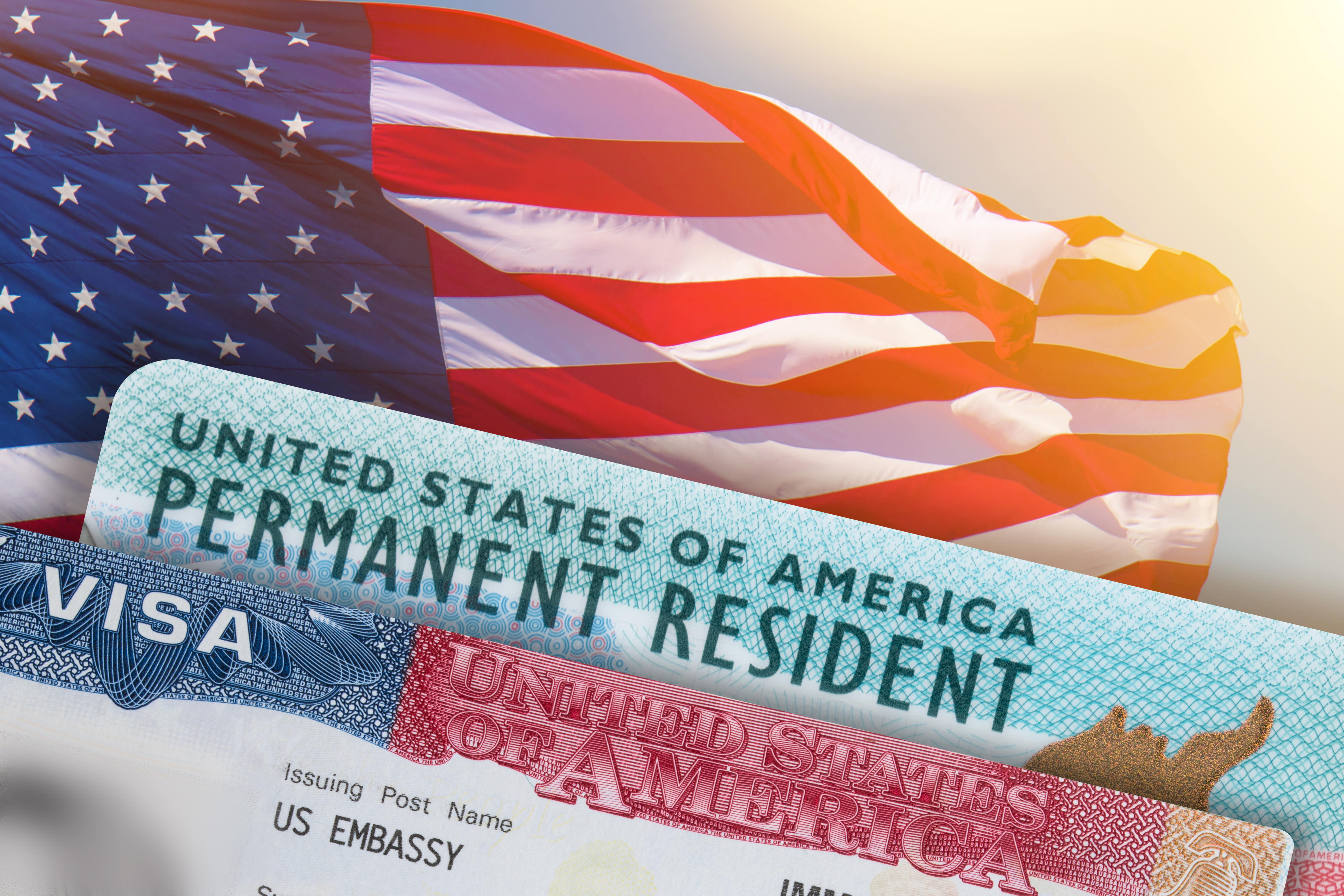If you’re interested in moving or traveling to the United States, you may have heard the terms ‘visa’ and ‘green card’ and wonder what the difference between a visa vs green card is. While there is overlap between visas and green cards under US immigration laws, not everyone who gets a visa winds up with a green card. Learn more below about visas and green cards.
Visa Overview
If you want to travel to the US and potentially immigrate, you usually need a visa to be admitted legally. As a visitor to the US, you need to obtain a visa through a US consulate or embassy overseas. You can apply for two kinds of visas:
- Immigrant visa: An immigrant visa allows you to live in the United States permanently and is one of the steps to eventually receiving a green card. You must obtain an immigrant visa before traveling to the US, and getting it is a more extensive process than a non-immigrant visa.
- Non-immigrant visa: A non-immigrant visa allows you to visit the US for a specific reason, such as a job, medical reasons, education, or business trip. A non-immigrant visa is valid for a limited time and there is a required departure date. This is a temporary visa that does not authorize you to live in the US.
Green Card Overview
A green card is a document that resembles a driver’s license that indicates the person is a permanent US resident. Having a green card allows you to legally work and travel anywhere in the US. In a technical sense, a green card is a kind of visa, but it allows you to work and reside in the United States permanently. You are usually issued a green card a few months after arriving in the US.
To obtain a green card, you must already have an immigrant visa, and you apply for it through the US Citizenship and Immigration Service (USCIS). Most green card holders can apply for US citizenship after three or five years. There are several ways people who want to move to the US can receive a green card:
- Employment-based: Some kinds of workers and sometimes their immediate family can get green cards that are linked to their employment.
- Family-based: Immediate relatives of US citizens and green card holders can apply for a green card. Immediate family members are parents, siblings, children, and others. Note that it takes longer to receive a green card if the family member in the US is a green card holder. US citizens’ applications to receive green cards for their family members are processed faster.
- Humanitarian: Asylum seekers, refugees, and victims of crime, abuse, and human trafficking can receive green cards to live in the US.
- Lottery: Every year, the US government randomly chooses as many as 50,000 people from entries from certain parts of the world, including Africa and Asia. Priority is given to populations that have not had extensive immigration to the US in recent years.
Differences Between a Visa and Green Card
The most significant difference between a visa and green card is when you receive it. You get a visa before traveling to the US, but the green card is issued after you arrive. Other differences are:
- A green card allows you to work and live permanently in the United States, while a visa doesn’t.
- Visas don’t usually allow you to stay in the US indefinitely.
- Non-immigrant visas have a definitive date you must exit the US.
- Non-immigrant visas don’t typically result in receiving a green card.
- You must receive an immigrant visa before getting a green card.
- Someone with a green card can apply for citizenship.
- An immigrant visa puts you on a path to receive a green card.
Visa vs Green Card Conclusion
In conclusion, while both visas and green cards are related to moving to the United States, they serve distinct functions. Visas are temporary permits that allow people to enter the United States for specified reasons such as tourism, study, or job, whereas green cards provide people permanent status. It’s critical to grasp the differences between these two types of immigration status and decide which one is best for your specific situation. Navigating the US immigration system can be made easier with the correct knowledge and advice.
Please contact us today if you need assistance with obtaining a visa or green card to enter the US.
Resources:
